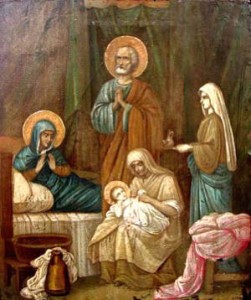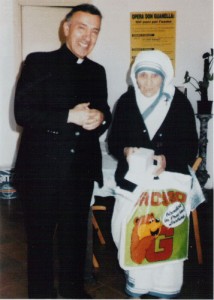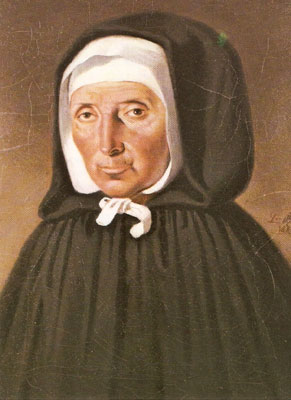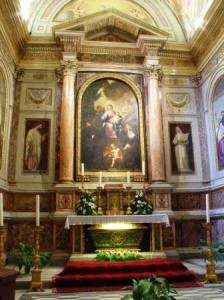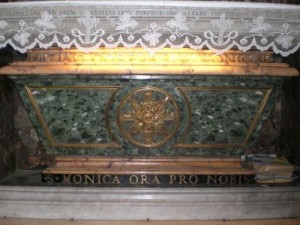What a joy to have the opportunity to talk once again with Fr. Michael Gaitley at the 2012 CMN Trade Show in Dallas, TX. Â We 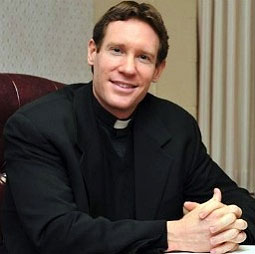 discuss the Year of Faith, “Consoling the Heart of Jesus” and his new book coming soon…”The One Thing is Three”. Â We talk about how the New Evangelization and the role model that Bl. John Paul II was to all of us. Â We all discuss “All Hearts a Fire” the new parish based program which is absolutely FANTASTIC! Â Be sure to check it out and pass it on!
discuss the Year of Faith, “Consoling the Heart of Jesus” and his new book coming soon…”The One Thing is Three”. Â We talk about how the New Evangelization and the role model that Bl. John Paul II was to all of us. Â We all discuss “All Hearts a Fire” the new parish based program which is absolutely FANTASTIC! Â Be sure to check it out and pass it on!
[powerpress]
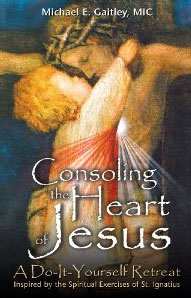 You can find the book here
You can find the book here
Michael Gaitley, MIC’s book is a form of a weekend retreat accessible to those at the beginning stages of a simple way to holiness. While reading this book, I wished I could have had it in conversing with people of little or practically no faith who yet had a longing for the faith that lies at the core of human existence. These hearts are restless until they rest in Thee, Lord and this book guides them on a journey to resting in God. –Fr. Mitch Pacwa
Tags: catholic, catholic podcast, catholic prayer, cathollc spirituality
This entry was posted on Monday, September 10th, 2012 at 9:00 am
You can follow any responses to this entry through the RSS 2.0 feed.
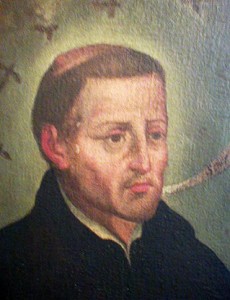 St. Peter Claver was a Jesuit who due to his life and work became the patron saint of slaves, of Colombia, and of African Americans.
St. Peter Claver was a Jesuit who due to his life and work became the patron saint of slaves, of Colombia, and of African Americans.
Claver arrived in Cartagena in 1610. By this time the slave trade had been established in the Americas for about 100 years and Cartagena was a chief center for it. Ten thousand slaves poured into the port yearly; crossing the Atlantic from West Africa under conditions so foul and inhuman that an estimated one-third of them died in transit. Although slave-trading was condemned by Pope Paul III and later labeled “supreme villainy” by Pius IX, there were fortunes to be made and it continued to flourish.
Claver’s predecessor Alfonso de Sandoval had devoted himself to the service of the slaves for 40 years before Claver arrived to continue the work, declaring himself “the slave of the slaves forever.”
As soon as a slave ship entered the port, Claver headed for the wharf and moved into its filthy and diseased hold to doctor and minister to the ill-treated and miserable human cargo. After the slaves were herded from the ship and penned in nearby yards to be
studied by crowds and buyers, Claver plunged in among them with medicines, food, bread, brandy, lemons and tobacco. With the help of interpreters and pictures which he carried with him, he gave basic instruction and assured the slaves of their human dignity and God’s saving love. During the 40 years of his ministry, Claver single-handedly catechized and baptized an estimated 300,000 of these slaves. Furthermore, Claver followed up to see that as Christians they were accorded their legal rights.
His apostolate extended beyond his care for slaves. He preached in the city square, gave missions to sailors and traders as well as country missions – returning every spring to visit those he had baptized and to follow up that they were being treated humanely. During these missions he avoided, whenever possible, the hospitality of the planters and overseers, and would lodge instead in the slave quarters.
His work on behalf of the slaves did not prevent him from caring also for the souls of the more well-to-do members of society and for the traders and visitors (including Muslims and English Protestants) to Cartagena, or for condemned criminals, many of whom he prepared for death. He was also a frequent visitor to the city’s hospitals.
Illness finally forced the saint into his room, where he lingered another four years, largely forgotten and neglected. He died on 8 September 1654. The city magistrates ordered a public funeral, at public expense, and he was buried with great pomp and ceremony.
He was canonized in 1888, and Pope Leo XIII declared him the worldwide patron of missionary work among black slaves. – Wikipedia
Dear Saint Peter Claver, you were permeated with compassion for the oppressed, for human beings sold as slaves and treated as expendable beasts. While alleviating their natural ills, you also took away their spiritual ills, and taught them the surpassing knowledge of Christ. Inspire many of our contemporaries to become self-sacrificing missionaries like you. Amen.
Tags: african americans, cartagena, pope paul iii, slave ship, slave trade, st peter claver
This entry was posted on Sunday, September 9th, 2012 at 12:06 am
You can follow any responses to this entry through the RSS 2.0 feed.
[powerpress]Msgr. Esseff reflects on the birth of the Virgin Mary.  But even more than that, he ponder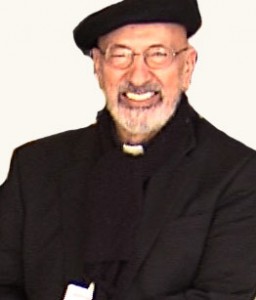 s the importance of the Blessed Mother in our lives.  The gift of her presence in the action of salvation history and  role is the “Mother” of us all.
s the importance of the Blessed Mother in our lives.  The gift of her presence in the action of salvation history and  role is the “Mother” of us all.
Be sure to visit Msgr. Esseff’s website “Building A Kingdom of Love“
Tags: blessed mother, virgin mary
This entry was posted on Saturday, September 8th, 2012 at 9:55 am
You can follow any responses to this entry through the RSS 2.0 feed.
I LOVE it…the birthday of the mother of all “moms”! Happy Birthday to the dearest Mother of all. The Church celebrates 3 birthdays on the calendar…Jesus, John the Baptist, and the great Mother of God, Mary Most Holy. We celebrate the day the Immaculate Conception was brought through birth into the world.  Â
From The Catholic News Agency –
“The Catholic Church will soon celebrate the birth of the Blessed Virgin Mary on its traditional fixed date of September 8, nine months after the December 8 celebration of her Immaculate Conception as the child of Saints Joachim and Anna.
The circumstances of the Virgin Mary’s infancy and early life are not directly recorded in the Bible, but other documents and traditions describing the circumstances of her birth are cited by some of the earliest Christian writers from the first centuries of the Church.
These accounts, although not considered authoritative in the same manner as the Bible, outline some of the Church’s traditional beliefs about the birth of Mary.
The “Protoevangelium of James,†which was probably put into its final written form in the early second century, describes Mary’s father Joachim as a wealthy member of one of the Twelve Tribes of Israel. Joachim was deeply grieved, along with his wife Anna, by their childlessness. “He called to mind Abraham,†the early Christian writing says, “that in the last day God gave him a son Isaac.â€
Joachim and Anna began to devote themselves extensively and rigorously to prayer and fasting, initially wondering whether their inability to conceive a child might signify God’s displeasure with them.
As it turned out, however, the couple were to be blessed even more abundantly than Abraham and Sarah, as an angel revealed to Anna when he appeared to her and prophesied that all generations would honor their future child: “The Lord has heard your prayer, and you shall conceive, and shall bring forth; and your seed shall be spoken of in all the world.â€
After Mary’s birth, according to the Protoevangelium of James, Anna “made a sanctuary†in the infant girl’s room, and “allowed nothing common or unclean†on account of the special holiness of the child. The same writing records that when she was one year old, her father “made a great feast, and invited the priests, and the scribes, and the elders, and all the people of Israel.â€
“And Joachim brought the child to the priests,†the account continues, “and they blessed her, saying: ‘O God of our fathers, bless this child, and give her an everlasting name to be named in all generations’ . . . And he brought her to the chief priests; and they blessed her, saying: ‘O God most high, look upon this child, and bless her with the utmost blessing, which shall be for ever.’â€
The protoevangelium goes on to describe how Mary’s parents, along with the temple priests, subsequently decided that she would be offered to God as a consecrated Virgin for the rest of her life, and enter a chaste marriage with the carpenter Joseph.
Saint Augustine described the birth of the Blessed Virgin Mary as an event of cosmic and historic significance, and an appropriate prelude to the birth of Jesus Christ. “She is the flower of the field from whom bloomed the precious lily of the valley,†he said.
The fourth-century bishop, whose theology profoundly shaped the Western Church’s understanding of sin and human nature, affirmed that “through her birth, the nature inherited from our first parents is changed.” – CNA
Tags: birth of the blessed virgin mary, blessed virgin mary, happy birthday, immaculate conception, Jesus, mary our mother, mother, mother of god, nativity of the blessed virgin mary, protoevangelium of james
This entry was posted on Saturday, September 8th, 2012 at 12:59 am
You can follow any responses to this entry through the RSS 2.0 feed.
[powerpress]Msgr. Esseff reflects on Blessed Mother Teresa whom he met in 1984 in Beruit, Lebanon. 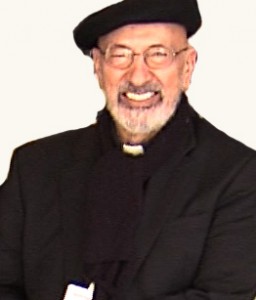 Msgr. Esseff worked alongside Blessed Mother Teresa in Calcutta, Lebanon, West Africa, Haiti and elsewhere and would go on to serve as a spiritual director and confessor for Mother Teresa and her sisters.  (The last few minutes of the reflection are particularly poignant)
Msgr. Esseff worked alongside Blessed Mother Teresa in Calcutta, Lebanon, West Africa, Haiti and elsewhere and would go on to serve as a spiritual director and confessor for Mother Teresa and her sisters.  (The last few minutes of the reflection are particularly poignant)
Be sure to visit Msgr. Esseff’s website “Building A Kingdom of Love“
Tags: blessed mother teresa of calcutta, msgr. john esseff
This entry was posted on Wednesday, September 5th, 2012 at 12:47 am
You can follow any responses to this entry through the RSS 2.0 feed.
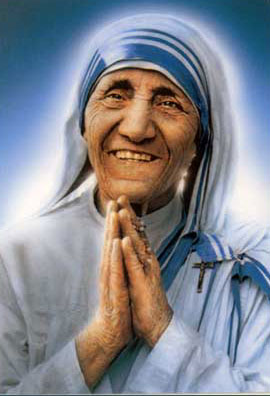 On this the feast day of Blessed Teresa of Calcutta:
On this the feast day of Blessed Teresa of Calcutta:
The Fruit of Prayer
The fruit of silence is prayer
the fruit of prayer is faith
the fruit of faith is love
the fruit of love is service
the fruit of service is peace.
If We Pray
If we pray, we will believe;
If we believe, we will love
If we love, we will serve.
Love to pray
Feel often during the day the need for prayer and pray.
Prayer opens the heart, till it is capable of containing God himself.
Ask and seek and your heart will be big enough to receive Him
and keep Him as Your Own.
Tags: blessed mother teresa of calcutta, missionaries of charity
This entry was posted on Wednesday, September 5th, 2012 at 12:13 am
You can follow any responses to this entry through the RSS 2.0 feed.
A quote from St. Jeanne Jugan:
“Go and find him when your patience and strength run out and you feel alone and helpless. Jesus is waiting for you in the chapel. Say to him, ‘Jesus, you know exactly what is going on. You are all I have, and you know all things. Come to my help.’ And then go, and don’t worry about how you are going to manage. That you have told God about it is enough. He has a good memory.”
A white martyrdom, of sorts, was given to this humble beautiful saint…her story is one of the most compelling I’ve ever heard. Â The fruit of obedience and humility is sainthood. Here’s her story:
From Catholicfounders.org
In 1837 Jeanne Jugan and two companions decided to move into a two-room apartment on Center Street and lead a life of prayer and dedication to God. Jeanne had always been sensitive to the things of God, and she saw him reflected in the numberless faces of the poor of France.
One day she encountered Anne Chauvin, a blind old widow with no one to look after her, and decided to bring her home. Since the apartment was on the second floor, Jeanne had to physically carry her up the narrow stairs. Jeanne gave her bed to Anne and moved into the loft.
Before long she took in another old woman, and Jeanne and her two companions had to work to support and feed themselves and two others. They would often stay up late at night mending and washing clothes and get up early each morning to care for the women in their charge.
Often on Sundays the three of them would go for a walk together along the seashore, stopping at a favorite cleft in the rocks to talk about God, their lives, and their plans for the future. (more…)
Tags: little sisters of the poor, st. jeanne jugan
This entry was posted on Thursday, August 30th, 2012 at 7:30 am
You can follow any responses to this entry through the RSS 2.0 feed.
Episode 18- Regnum Novum: Bringing forth the New Evangelization through Catholic Social Teaching with Omar Gutierrez - Bl. John Paul II - Laborem Exercens (1981), Sollicitudo Rei Socialis (1987), and the Centesimus Annus (1991)
- Bl. John Paul II - Laborem Exercens (1981), Sollicitudo Rei Socialis (1987), and the Centesimus Annus (1991)
[powerpress]
We live at a very special time. The confluence of many things has brought forth the clear need to be able to articulate the Social Teaching of the Catholic Church in a way that is accessible and applicable. This is not to be an effort where high-minded theories are to be bandied about. Rather, this is a time of opportunity wherein we can apply the Social Doctrine to the concrete so as to bring about a New Kingdom, a Revolution. – Omar G.
John Paul II , sometimes called John Paul the Great, born Karol Józef Wojtyła  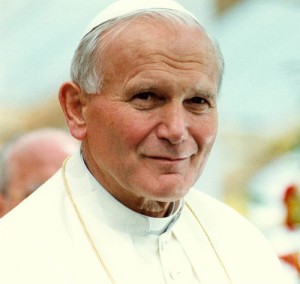 18 May 1920, Wadowice, Republic of Poland – 2 April 2005, Vatican City), reigned as Pope of theCatholic Church from 1978 until his death in 2005. He was the second-longest serving Pope in history and the first non-Italian since 1523.
18 May 1920, Wadowice, Republic of Poland – 2 April 2005, Vatican City), reigned as Pope of theCatholic Church from 1978 until his death in 2005. He was the second-longest serving Pope in history and the first non-Italian since 1523.
In this episode we discuss  Laborem Exercens (1981), Sollicitudo Rei Socialis (1987), and the Centesimus Annus (1991), among other works
Also visit Omar’s “Discerning Hearts” page Catholic Social Teaching 101
Tags: catholic social doctrine, catholic social justice, catholic social teaching, Centesimus Annus, Laborem Exercens, Sollicitudo Rei Socialis
This entry was posted on Tuesday, August 28th, 2012 at 8:29 am
You can follow any responses to this entry through the RSS 2.0 feed.
The importance of his life and contribution to the Church cannot be overstated. St. Augustine, one of the greatest of the Church Fathers, has not only influenced the Church, but the thought of the world as we know it. The story of his conversion as chronicled in his “Confessions”, would be 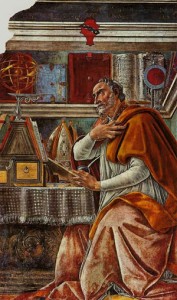 enough, but then add the body of his theological work and you have nothing less than a glimpse of what is truly the power of “grace and mercy”.
enough, but then add the body of his theological work and you have nothing less than a glimpse of what is truly the power of “grace and mercy”.
Mike Aquilina is one of the best at bringing this great saint’s life into perspective.
For a more detail accounting of St. Augustine’s  life, you can visit Lives of the Saints
Spiritual Writings:
-Â ConfessionsÂ
-Â Letters
-Â City of God
-Â Christian Doctrine
-Â On the Holy Trinity
-Â The Enchiridion
-Â On the Catechising of the Uninstructed
-Â On Faith and the Creed
-Â Concerning Faith of Things Not Seen
-Â On the Profit of Believing
-Â On the Creed: A Sermon to Catechumens
-Â On Continence
-Â On the Good of Marriage
-Â On Holy Virginity
-Â On the Good of Widowhood
-Â On Lying
-Â To Consentius: Against Lying
-Â On the Work of Monks
-Â On Patience
-Â On Care to be Had For the Dead
-Â On the Morals of the Catholic Church
-Â On the Morals of the Manichaeans
-Â On Two Souls, Against the Manichaeans
-Â Acts or Disputation Against Fortunatus the Manichaean
-Â Against the Epistle of Manichaeus Called Fundamental
-Â Reply to Faustus the Manichaean
-Â Concerning the Nature of Good, Against the Manichaeans
-Â On Baptism, Against the Donatists
-Â Answer to Letters of Petilian, Bishop of Cirta
-Â Merits and Remission of Sin, and Infant Baptism
-Â On the Spirit and the Letter
-Â On Nature and Grace
-Â On Man’s Perfection in Righteousness
-Â On the Proceedings of Pelagius
-Â On the Grace of Christ, and on Original Sin
-Â On Marriage and Concupiscence
-Â On the Soul and its Origin
-Â Against Two Letters of the Pelagians
-Â On Grace and Free Will
-Â On Rebuke and Grace
-Â The Predestination of the Saints/Gift of Perseverance
-Â Our Lord’s Sermon on the Mount
-Â The Harmony of the Gospels
-Â Sermons on Selected Lessons of the New Testament
-Â Tractates on the Gospel of John
-Â Homilies on the First Epistle of John
-Â Soliloquies
-Â The Enarrations, or Expositions, on the Psalms
For me, out of all the St. Augustine’s work, this is the piece that deeply touches my heart and is one of my all-time favorite prayers:
Late Have I Loved You
A Prayer of Saint Augustine
Late have I loved you, O Beauty, so ancient and so new, late have I loved you!
And behold, you were within me and I was outside, and there I sought for you, and in my deformity I rushed headlong into the well-formed things that you have made.
You were with me, and I was not with you. Those outer beauties held me far from you, yet if they had not been in you, they would not have existed at all.
You called, and cried out to me and broke open my deafness; you shone forth upon me and you scattered my blindness.
You breathed fragrance, and I drew in my breath and I now pant for you.
I tasted, and I hunger and thirst; you touched me, and I burned for your peace.
This prayer is from his book, “Confessions.”
                         Â
Tags: confessions, conversion, fathers mike, grace and mercy, mike aquilina, our sunday visitor, prayer, st augustine
This entry was posted on Tuesday, August 28th, 2012 at 12:22 am
You can follow any responses to this entry through the RSS 2.0 feed.
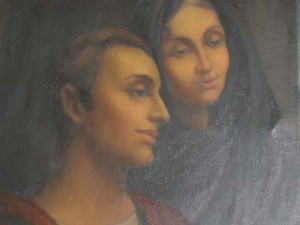 St. Monica (331-387) a “shining light of Christ” example of perserverance in prayer! We have her as an outstanding model of never giving up…what a gift to us! Today we can turn to her and see what sticking to it can do, but did you ever think, “Who was her example?” She didn’t know how the story of her son, St. Augustine would turn out. She didn’t know that he would be transformed by grace into one of the greatest Doctors of the Church  who ever lived. Monica must have become frustrated, and at times filled with anxiety and maybe even  a degree of despair, but she persevered through it all! She surely suffered emotionally for her lost son, but she never gave up her hope in God and faith in His promises…the energy of her love for her son fueled her prayer and grace transformed his seeking heart. It took 30 years, but it happened.
St. Monica (331-387) a “shining light of Christ” example of perserverance in prayer! We have her as an outstanding model of never giving up…what a gift to us! Today we can turn to her and see what sticking to it can do, but did you ever think, “Who was her example?” She didn’t know how the story of her son, St. Augustine would turn out. She didn’t know that he would be transformed by grace into one of the greatest Doctors of the Church  who ever lived. Monica must have become frustrated, and at times filled with anxiety and maybe even  a degree of despair, but she persevered through it all! She surely suffered emotionally for her lost son, but she never gave up her hope in God and faith in His promises…the energy of her love for her son fueled her prayer and grace transformed his seeking heart. It took 30 years, but it happened.
A few months after his conversion, Augustine, Monica and Adeodatus (her other son), set out to return to Africa, but Monica died at Ostia, the ancient port city of Rome, and she was buried there. Some pictures show her so old, but when you think of it, she was only 56 when she died. Augustine was so deeply moved by his mother’s death that he was inspired to write his Confessions, “So be fulfilled what my mother desired of me–more richly in the prayers of so many gained for her through these confessions of mine than by my prayers alone” (Book IX.13.37)
An account of Monica’s early life, her childhood, marriage, her final days and her death, is given in Confessions Book IX, 8-12. He expresses his gratitude for her life:
“I will not speak of her gifts, but of thy gift in her; for she neither made herself nor trained herself. Thou didst create her, and neither her father nor her mother knew what kind of being was to come forth from them. And it was the rod of thy Christ, the discipline of thy only Son, that trained her in thy fear, in the house of one of thy faithful ones who was a sound member of thy Church” (IX.8.7).
Centuries later, Monica’s body was brought to Rome, and eventually her relics were interred in a chapel left of the high altar of the Church of St. Augustine in Rome (see below).
Tags: catholic, catholic podcast, catholic prayer, cathollc spirituality, confessions, conversion, prayer, relics, st augustine, st monica
This entry was posted on Monday, August 27th, 2012 at 12:14 am
You can follow any responses to this entry through the RSS 2.0 feed.
[powerpress] Msgr. Esseff reflects so beautifully about the Queenship of Mary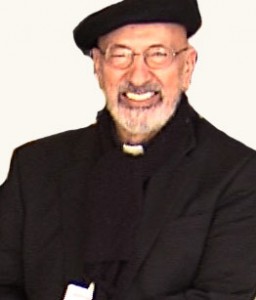 …Queen of Heaven. He talks about the joys and peace of the heavenly encounter with our Blessed Mother and with the Holy Trinity. It is a very special reflection…not to be missed!
…Queen of Heaven. He talks about the joys and peace of the heavenly encounter with our Blessed Mother and with the Holy Trinity. It is a very special reflection…not to be missed!
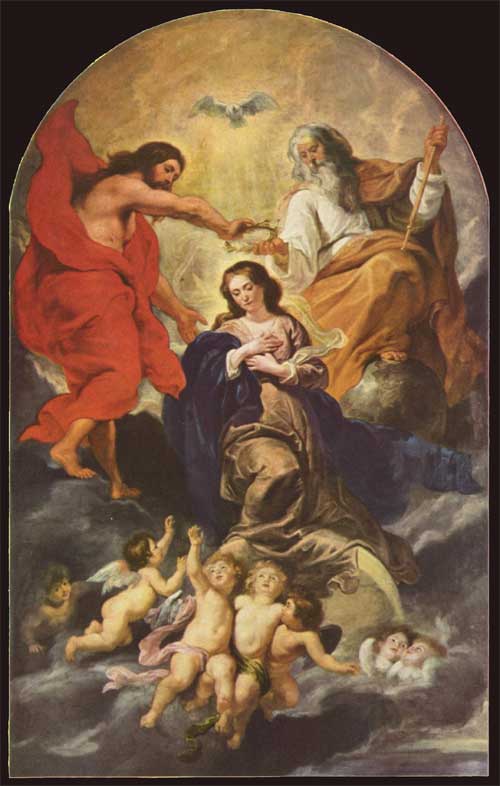 Msgr. John A. Esseff is a Roman Catholic priest in the Diocese of Scranton. He was ordained on May 30th 1953, by the late Bishop William J. Hafey, D.D. at St. Peter’s Cathedral in Scranton, PA. Msgr. Esseff served a retreat director and confessor to Blessed Mother Teresa.   He continues to offer direction and retreats for the sisters of the missionaries of charity around the world. Msgr. Esseff encountered St.  Padre Pio,  who would become a spiritual father to him. He has lived in areas around the world,  serving  in the Pontifical missions, a Catholic organization established by Bl. Pope John Paul II to bring the Good News to the world especially to the poor. Msgr. Esseff assisted the founders of the Institute for Priestly Formation and continues to serve as a spiritual director for the Institute. He continues to  serve as a retreat leader and director to bishops, priests and sisters and seminarians and other religious leaders around the world. Â
Msgr. John A. Esseff is a Roman Catholic priest in the Diocese of Scranton. He was ordained on May 30th 1953, by the late Bishop William J. Hafey, D.D. at St. Peter’s Cathedral in Scranton, PA. Msgr. Esseff served a retreat director and confessor to Blessed Mother Teresa.   He continues to offer direction and retreats for the sisters of the missionaries of charity around the world. Msgr. Esseff encountered St.  Padre Pio,  who would become a spiritual father to him. He has lived in areas around the world,  serving  in the Pontifical missions, a Catholic organization established by Bl. Pope John Paul II to bring the Good News to the world especially to the poor. Msgr. Esseff assisted the founders of the Institute for Priestly Formation and continues to serve as a spiritual director for the Institute. He continues to  serve as a retreat leader and director to bishops, priests and sisters and seminarians and other religious leaders around the world. Â
To obtain a copy of Msgr. Esseff’s book byvisiting here
Be sure to visit Msgr. Esseff’s website “Building a Kingdom of  Love”
Tags: Esseff, John A. Esseff, John Esseff
This entry was posted on Thursday, August 23rd, 2012 at 12:15 pm
You can follow any responses to this entry through the RSS 2.0 feed.
Fr. James Kubicki, the director of the Apostleship of Prayer, Â shares insights of the Queenship of Mary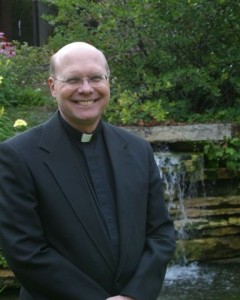
Tags: apostleship of prayer, blessed virgin mary, James Kubicki
This entry was posted on Wednesday, August 22nd, 2012 at 12:57 am
You can follow any responses to this entry through the RSS 2.0 feed.
Gregorian hymn chant of Roman Catholic Christian Church in honour of Mary, Mother of God. It is also a common prayer to the Virgin Mary; usually recited at the end of the rosary.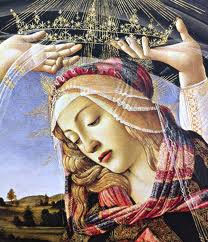
Tags: chant, prayer, rosary, virgin mary
This entry was posted on Wednesday, August 22nd, 2012 at 12:06 am
You can follow any responses to this entry through the RSS 2.0 feed.
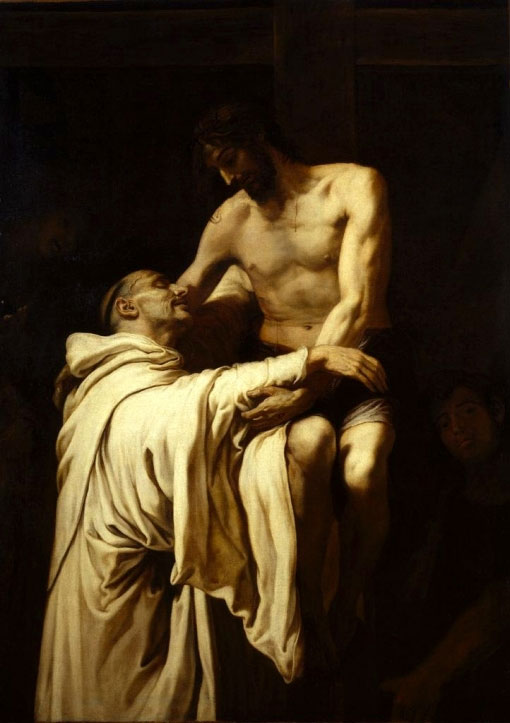 St. Bernard of Clairvaux, a great mystical doctor of the Church. What a heart for Jesus and the Blessed Virgin (I’m sure he still has).
St. Bernard of Clairvaux, a great mystical doctor of the Church. What a heart for Jesus and the Blessed Virgin (I’m sure he still has).
That is curiosity.
That is vanity.
–
That is love.”
St. Bernard of Clairvaux, was a Cisterian monk, who lived in France in the 12th century. Living at a time when the great gothic cathedrals where born, St. Bernard, advocated for simplicity and austerity in life. He was concerned about the temptations of worldly things and desires. He wished to focus solely on the love of Christ and the Blessed Mother; everything else was folly.
To read more about the details of his life you can visit here.
What captures my heart is his legacy of prayer and spiritual writings. He truly deserves the title Doctor of the Church. What a feast he has left us! Pope John Paul II has said that if we wish to learn to pray, look to the Mystical Doctors…he truly is one of those special souls. There is so much, where can one begin? Begin with Mary. Ask the Blessed Mother, she will lead you through his teachings.
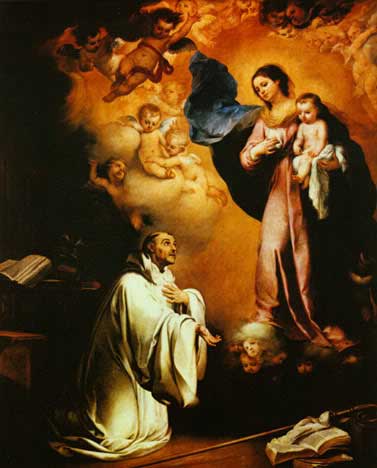 St. Bernard of Clairvaux composed the famous prayer to the Most Blessed Virgin Mary known as The Memorare
St. Bernard of Clairvaux composed the famous prayer to the Most Blessed Virgin Mary known as The Memorare
REMEMBER, O most gracious Virgin Mary, that never was it known that anyone who fled to thy protection, implored thy help, or sought thy intercession was left unaided. Inspired with this confidence, I fly to thee, O Virgin of virgins, my Mother; to thee do I come; before thee I stand, sinful and sorrowful. O Mother of the Word Incarnate, despise not my petitions, but in thy mercy hear and answer me. Amen.
St. Bernard on the Blessed Mother
St. Bernard on Holy Repentance
–
Highly recommended reading introduction to St. Bernard would be – “The Fulfillment of All Desire” by Ralph Martin
–
Tags: blessed mother, blessed virgin mary, Church, discerning heart, doctor of the church, emmaus road, holy repentance, intercession, love, monastic life, mystic, mystic of the Church, ralph martin, st bernard of clairvaux
This entry was posted on Monday, August 20th, 2012 at 12:40 am
You can follow any responses to this entry through the RSS 2.0 feed.
[powerpress]Msgr. Esseff reflects on the Assumption of the Blessed Virgin Mary and it’s meaning for our lives and destiny. 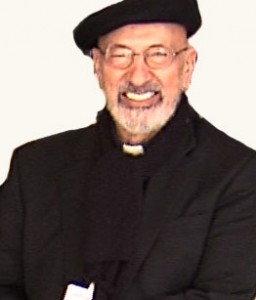 Â He brings forth from the liturgy of the day the Sacred Scripture a teaching which begins with fall of man, but the redemption brought about by Jesus Christ. Â And because of His Resurrection, death has no power over us. Â He
 He brings forth from the liturgy of the day the Sacred Scripture a teaching which begins with fall of man, but the redemption brought about by Jesus Christ.  And because of His Resurrection, death has no power over us.  He 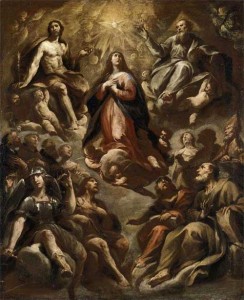 explains this by sharing the death of his own sister and the prayer of his mother.  Msgr. Esseff explains Mary sinlessness as the Immaculate Conception and the purpose of the Assumption.  He discusses Chap. 12 of the Book of Revelation, as well as Our Lady of Guadalupe and Fatima and the message for us today.  Msgr. Esseff talks about our struggles with death, not only our own, but also those of our loved ones.  How we hold on sometimes to tightly to those we should let go to the Father, because of our own fears and desires…and possibly our selfishness.  We need to remember  the joys of Eternal Life and the role of Mary, our Mother, who helps us with the transition.  Be not afraid!
explains this by sharing the death of his own sister and the prayer of his mother.  Msgr. Esseff explains Mary sinlessness as the Immaculate Conception and the purpose of the Assumption.  He discusses Chap. 12 of the Book of Revelation, as well as Our Lady of Guadalupe and Fatima and the message for us today.  Msgr. Esseff talks about our struggles with death, not only our own, but also those of our loved ones.  How we hold on sometimes to tightly to those we should let go to the Father, because of our own fears and desires…and possibly our selfishness.  We need to remember  the joys of Eternal Life and the role of Mary, our Mother, who helps us with the transition.  Be not afraid!
Tags: death, immaculate conception, jesus christ, sacred scripture, the assumption
This entry was posted on Wednesday, August 15th, 2012 at 3:00 pm
You can follow any responses to this entry through the RSS 2.0 feed.

